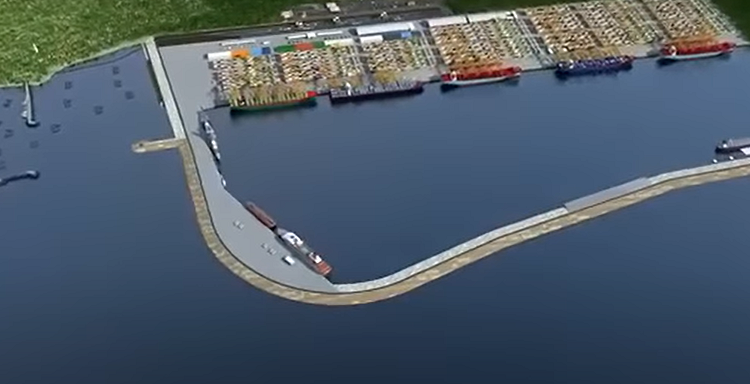
Vizhinjam Port in Kerala and its potential in India’s maritime trade
THIRUVANANTHAPURAM : With the docking of the first ship on Sunday, the under-construction Vizhinjam International Seaport, the country’s first deepwater container transshipment terminal, near Thiruvananthapuram in Kerala will mark a significant milestone.
The first phase of the ₹7,600-crore mega infra project, which began in 2015, is expected to be completed by May 2024 and when fully realised, the port will have the capacity to cater to 75 percent of the container transshipment needs of India. Officials say that the port will be able to handle container vessels with up to 24,000 TEU capacity. Around 800 metres of berth and nearly 3,000 metres of breakwater is being readied as part of the first phase of construction.
The Vizhinjam port is being built on a public-private-partnership (PPP) mode with funding from the Kerala government, Centre and the Adani Ports Private Limited being the developer. In fact, it is the first greenfield port project to receive viability gap funding from the government of India.
Located just 10 nautical miles from the international shipping line and gifted with a natural depth of 18 metres, the port has the potential to give a tremendous boost to the country’s maritime trade which is currently suffering due to the lack of a major port in southern India. The depth at Vizhinjam is more than that of any competing port in the country and is either more than or equal to that of international competing ports like Singapore, Colombo and Salalah in Oman. This will enable large container vessels traversing the international shipping routes to seamlessly access the port at Vizhinjam. The strategic location of the port, being the only one in India to be so close to the east-west shipping channel, is a major asset.
Once fully commissioned, the port can directly compete with neighbouring ports like Colombo in Sri Lanka, Jebel Ali in Dubai and Singapore which handle a major share of the international transshipment needs currently. It will enhance India’s ability to handle gateway and transshipment cargo and at the same time establish a strong supply chain network in Kerala. Around 3 million TEUs of cargo containers bound for India are transshipped annually at ports like Colombo and Singapore currently, a statistic which can be cut back significantly through the emergence of the Vizhinjam port.
The port will have the capacity to handle cargo of 1 million TEUs by the end of phase-1 which will rise to 3.3 million TEUs by phase-3. It also enjoys good connectivity through the four-lane NH66 and the international airport in Thiruvananthapuram, located just 16 kms away. There is a proposal for a dedicated freight corridor on rail which will deepen the supply chain network.
Though the port is set to be realised soon, the journey for those behind it has not been easy. Initially planned to be completed in just 1,000 days when it commenced construction in 2015, the port has suffered major delays due to various reasons.
The arrival of Cyclone Ockhi on the Thiruvananthapuram coast in 2017 brought with it severe damage to the two dredgers that had been deployed as part of the port project. The very severe cyclonic storm along with the heavy rainfall in 2018 that caused massive floods in Kerala resulted in the work on the port halted for months. Subsequently, in 2021, another Cyclone Tauktae in the Arabian Sea triggered massive tidal waves that broke off a portion of the breakwater, a critical component of the port in Vizhinjam. The Covid-19 pandemic that lingered for nearly two years was also a major factor contributing to the delay.
If the natural disasters weren’t enough, in 2022, the port project was beset with massive protests by local fisherfolk spearheaded by the Thiruvananthapuram archdiocese of the Latin Catholic Church. The fisherfolk claimed that the breakwaters erected as part of the project resulted in sea erosion in surrounding villages, leading to loss of lives and property. For months, the agitation halted the work on the port and on November 27, it took a dark turn with a mob of locals attacking the Vizhinjam police station and its personnel. The agitation was finally called off a week later following talks between chief minister Pinarayi Vijayan and the fisherfolk groups.
After multiple delays, the ambitious Vizhinjam port is finally headed towards commissioning next year, promising major progress in the country’s maritime trade sector.
